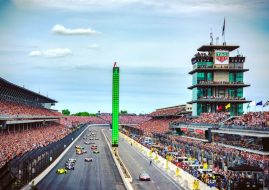Top 10 World's Most Dangerous Race Tracks
The motorsport is dangerous and not safe at all, we know that for more than hundred years since first races were organized and first fatal accidents happened. On the other hand, we must admit that it is very exciting. It is not something anyone can do, which is why men and women who are racers have special skills and courage.
However, sometimes and somewhere the racing was more dangerous in comparison to some other places. Here’s the list of the most dangerous race tracks worldwide, not only closed road courses but also open-road tracks.

Isle of Man TT race – the deadliest race on the planet
Snaefell Mountain Course – Isle of Man TT
The International Isle of Man TT (Tourist Trophy) is a motorcycle race at Snaefell Mountain Course, the 37.7 miles long track with more than 200 bends through the public roads on the Isle of Man. Although originally motorcycle race, even as a part of the World championship between 1949 and 1976, the course was popular also among car drivers.
With recorded more than 270 fatalities since the inaugural event, of which 262 were competitors, this track is the most dangerous race track in the world. The deadliest year was 2005 when eleven people (nine drivers, marshal and spectator) were killed during two separate events (TT race and Manx Grand Prix). Among all those motorcycle racers, there was one race car driver (James Neilson) who was killed during 1953 British Empire Trophy race.
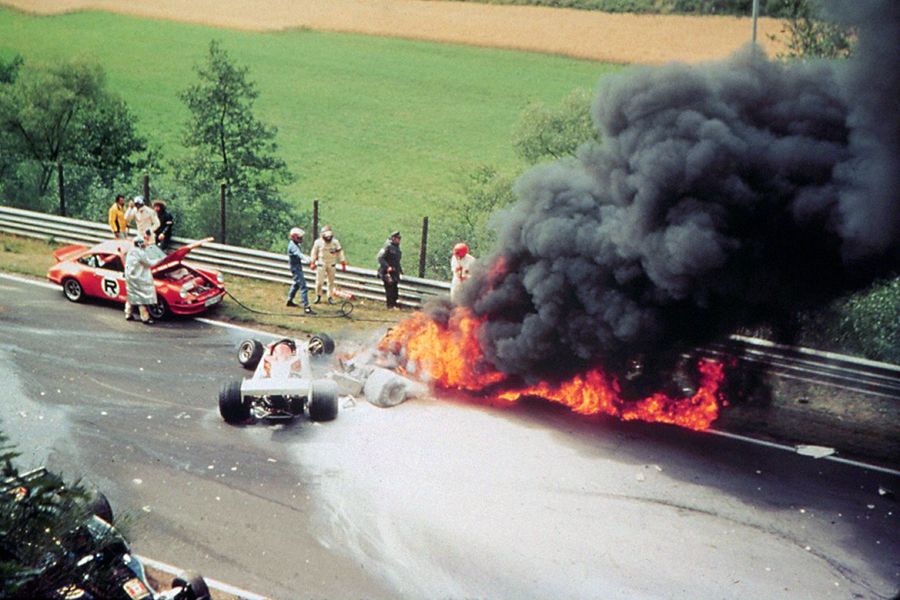
Niki Lauda’s crash at Nordschleife in 1976
Nürburgring Nordschleife
Nürburgring Nordschleife or the Green Hell is the legendary race track that earned its nickname because of difficulty to drive at the 20.8-km circuit (current layout) with more than 150 turns. The number of turns, the various surfaces and unpredictable weather conditions made this track even tougher. Unfortunately, many drivers didn’t survive their Nürburgring adventure.
The official number of deaths are 78, including 69 drivers during official competitions, but unofficial number is much bigger because during the year Nordschleife is opened for the various private and factory test, track days and other events, so all fatalities are not recorded.
The most famous accident, fortunately without fatal victims, was Niki Lauda‘s crash during the 1976 German Grand Prix, when he was burned in his Ferrari. Many other famous drivers had accidents at Nürburgring. Some of the drivers who didn’t survive were Onofre Marimon (1954), Peter Collins (1958), Carel Godin de Beaufort (1964) and John Taylor (1966). The last fatal accident happened in March 2015, when Jann Mardenborough flew over the fence with Nissan GT-R Nismo GT3 and killed one spectator.
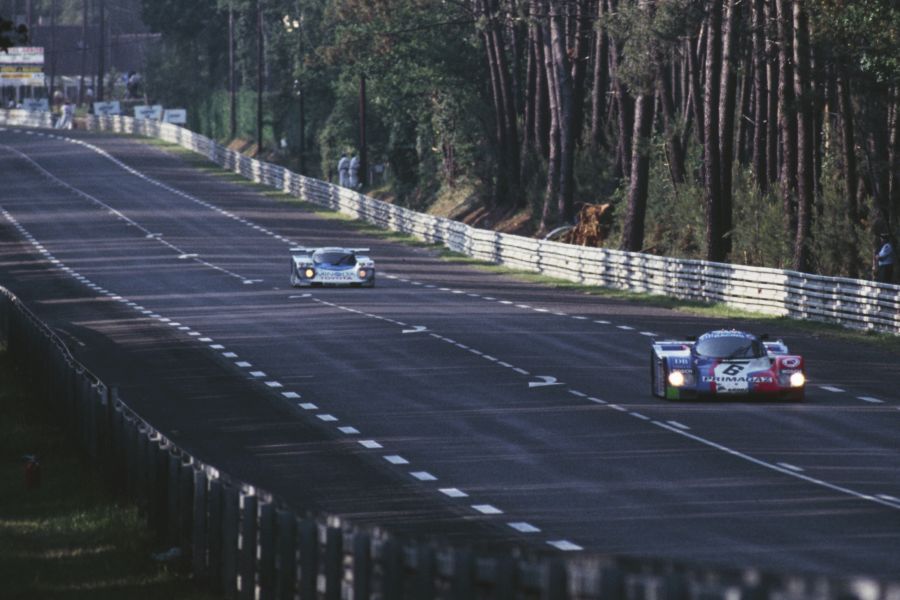
Mulsanne Straight at Circuit de la Sarthe
Circuit de la Sarthe – 24 hours of Le Mans
24 hours of Le Mans race at Circuit de la Sarthe is probably the most famous race in the world, but also the place of the biggest disasters in the world’s motorsport history. On June 11, 1955, eighty-three spectators and driver Pierre Levegh were killed in a crash, plus 120 more injured spectators. The catastrophe happened after a controversial clash between Levegh’s Mercedes and Lance Macklin’s Austin-Healey.
Besides 1955 disaster, Le Mans was the place of many more fatal accidents. Drivers’ exhaustion, high speeds and a crowd of the cars on the track were the reasons for most of the times. The last fatal crash happened in 2013 when Danish driver Allan Simonsen was killed in his Aston Martin at the exit of the Tertre Rouge. Prior to that, 20 more drivers lost their lives on the Circuit de la Sarthe, more than half on the infamous Mulsanne Straight.
The deadliest decades were the 1950s and 1960s, with eleven driver fatalities between 1951 and 1969, including some renown drivers as Lucien Bianchi or Walt Hansgen. The most famous victim of Le Mans circuit was Joakim Bonnier during the 1972 race, who went off the road to the trees after crashing with his Lola into slower Ferrari.
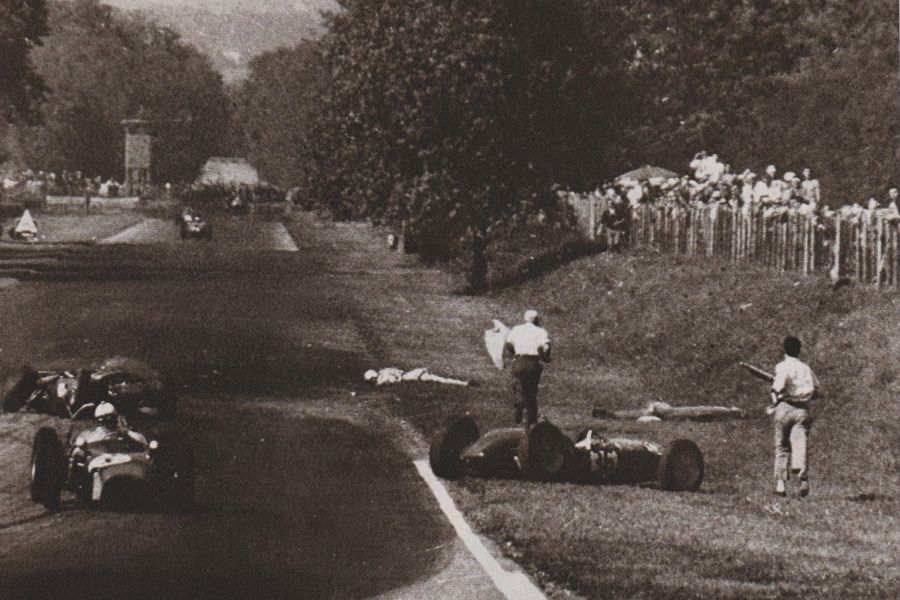
The death of Wolfgang von Trips and 14 spectators was the biggest tragedy in the history of Monza
Autodromo Nazionale Monza
The Monza Circuit, one of three oldest permanent race tracks in the world, opened in 1922, is also one of the most dangerous. The circuit, which is on the calendar of the Formula One Championship since its inaugural season in 1950, took lives of many F1 greats among others.
The two-time F1 champion Alberto Ascari was killed at Monza in 1955, Wolfgang von Trips and 14 spectators died in 1961, Jochen Rindt was killed in 1970, Ronnie Peterson died in a hospital after he crashed at Monza. In total, the lost lives of 52 drivers and 35 spectators are written on the walls of Monza, which is the biggest number of all current F1 tracks.
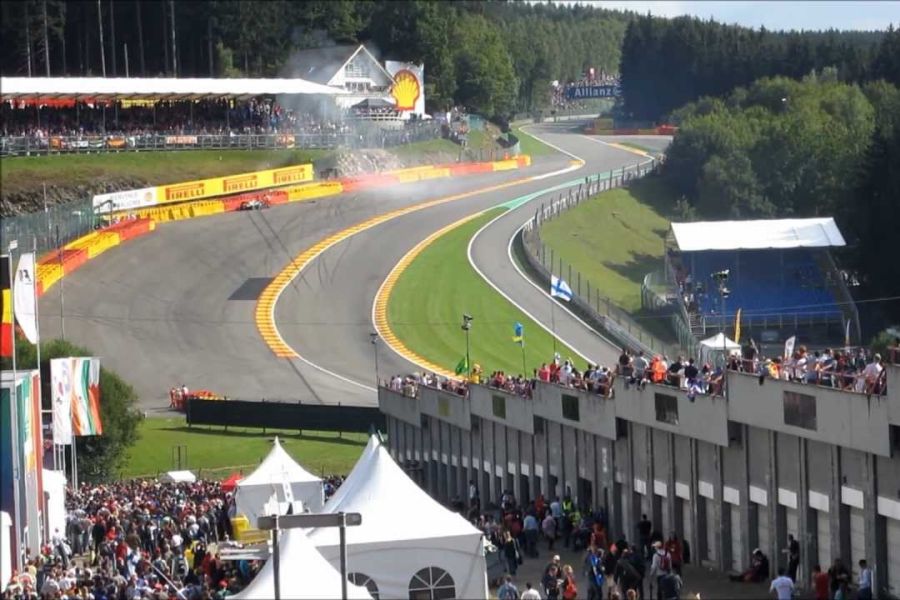
Crashing at Eau Rouge is the part of the game
Circuit de Spa-Francorchamps
The Circuit Spa-Francorchamps is one of the most popular but also among the most dangerous Formula One race tracks. Obviously, for the popularity, many victims must be sacrificed. The Spa’s Eau Rouge corner is one of the most known corners in the world of racing, but also the corner that took many lives since its construction in 1939.
In total, 48 cars and motorcycle drivers and six other people (marshals, policeman, spectator) lost their lives at Spa-Francorchamps. The most famous of them all was Stefan Bellof, who was killed in a two-Porsche crash during the World Sportscar Championship race. The most remembered event was the 1960 F1 Grand Prix when two drivers were killed (Chris Bristow and Alan Stacey) while Stirling Moss broke both legs but survived.
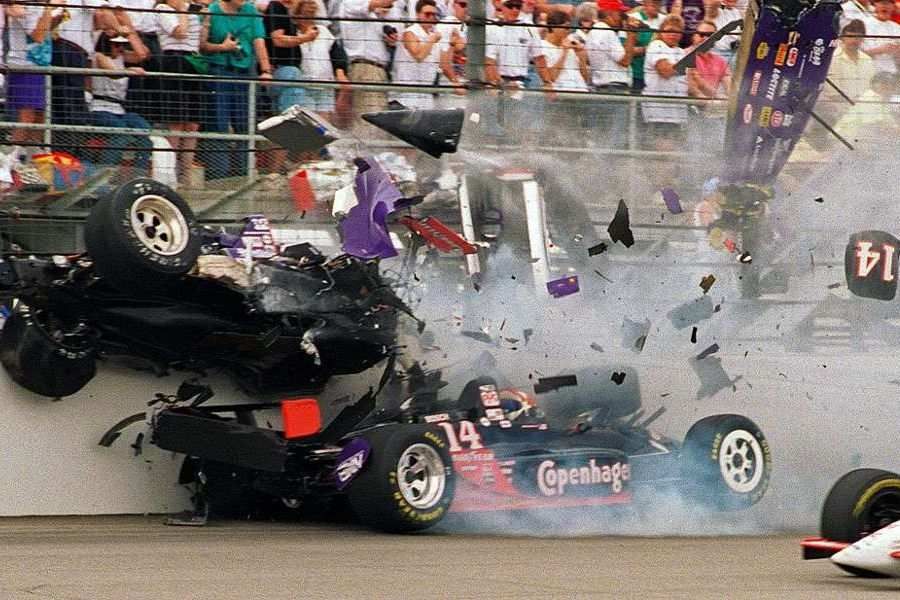
Due to high speeds, crashes at Indianapolis mostly looks horrifying
Indianapolis Motor Speedway
73 names of fallen individuals (including 42 drivers) are written in the bricks of the Brickyard, which is the common name of the Indianapolis Motor Speedway. The first fatalities were recorded in the very first race on August 19, 1909, when Wilfred Bourque and his mechanic were killed. Two days later, two spectators and one mechanic were killed.
In the next couple of years and decades, some famous drivers lost their lives at Indianapolis, for instance, Bill Vukovich (1955), Jerry Unser (1959), Tony Bettenhausen (1961) or Mike Spence (1968), during the Indianapolis 500 races or some other events. The last victim was a motorcycle rider Peter Lenz during the warm-up for the race in August 2010.
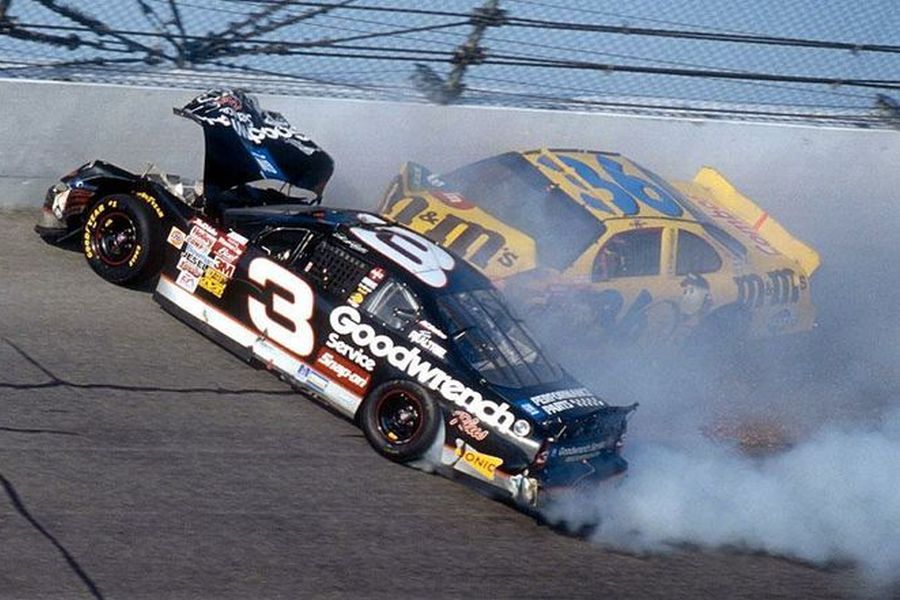
Black Sunday at Daytona – Dale Earnhardt’s crash and death
Daytona International Speedway
When writing about motorsport accidents, the Daytona International Speedway‘s history was marked by the Black Sunday, the day when the seven-time NASCAR champion Dale Earnhardt was killed. It happened on February 18, 2001, while Earnhardt was leading in the Daytona 500 race.
According to various sources, Earnhardt is one between 23-28 drivers who lost their lives at Daytona International Speedway. In total, 40 people were killed there, including one powerboat racer, because the powerboat track is the part of the speedway.

Crash at Carrera Panamericana
Carrera Panamericana – Mexico
The Carrera Panamericana was the endurance race that was held on the public roads in Mexico, imitating similar Italian races Targa Florio and Mille Miglia. Just five races were held between 1950 and 1954, but a number of 27 fatalities gave this race the biggest mortality rate of all the races.
The inaugural event took four victims (three competitors, one spectator) but the race returned to Mexico next year. The race in 1953 was the deadliest event, with nine fatal victims, including Lancia driver Felice Bonetto. During the 1954 event, won by Umberto Maglioli, seven people lost their lives. Due to safety concerns, the race was finally canceled in 1955.
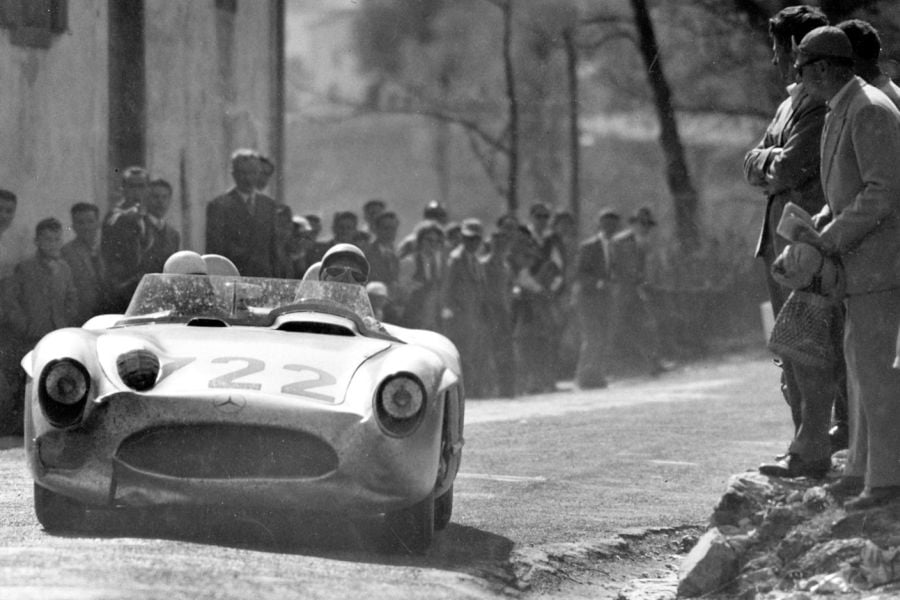
Mille Miglia – racing on public roads was extremely dangerous
Mille Miglia – Italy
The Mille Miglia was a famous sports car race on the open public roads through the central and northern Italy between 1927 and 1957. The last five editions of the race were on the calendar of the World Sportscar Championship.
The races on the open roads were common in that time, but the negativity of such type of racing was a big number of victims among drivers and spectators. 56 people were killed during the period of 30 years in 24 races, which made the Mille Miglia the deadliest race among similar races on the public roads. The race was banned after two fatal crashes during the 1957 event. In Guidizzolo village, nine spectators were killed along driver Alfonso de Portago and his navigator.

Porsche crashed at Targa Florio
Targa Florio – Sicily
Like some other races on the list, the Targa Florio was an open road sports car race that was held in Sicily, Italy, between 1906 and 1977. Several versions of the circuit were used through the decades, but all variants were using the public roads through the Sicilian towns and villages, which sometimes became extremely dangerous.
In 1977, police stopped the event after two spectators were killed in a crash and it was the last Targa Florio in original format. The race was later converted into rally event, as a part of the Italian rally championship. In total, nine people lost their lives at Targa Florio, which is a small number compared to some other former road races.
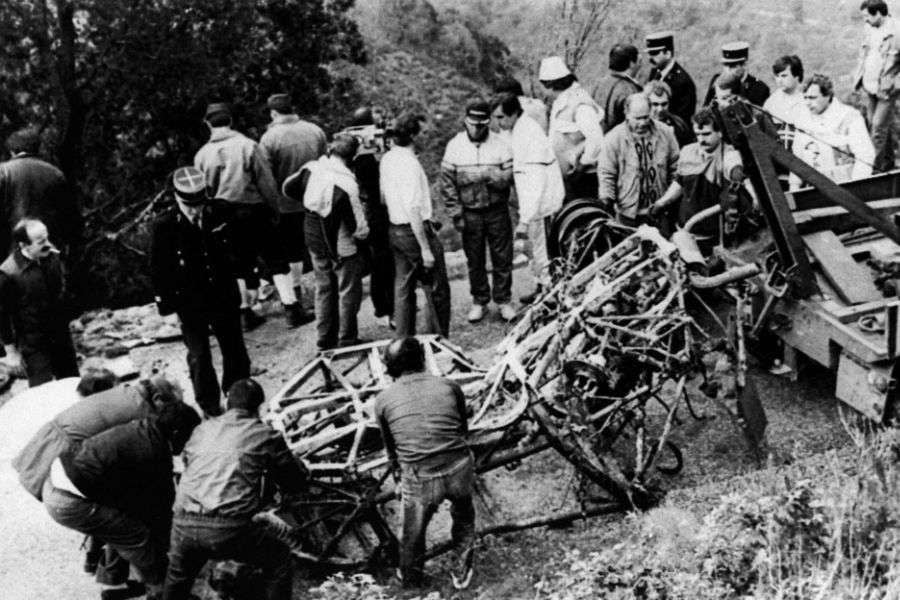
WRC rally at Corsica was a deadly event three years in a row (1985-1987)
Deadly off-road and rally events: Dakar, Baja 1000, Tour de Corse…
This list could be increased to some more famous race events like Dakar Rally or Baja 1000 cross-country races, that also counted few dozens of fatal victims. However, those races take place on the few thousand miles long courses, which couldn’t be called race tracks.
Some WRC rally events could also take place on the list because they marked the history of world rallying with multiple fatal accidents. The most remembered one was the 1986 Tour de Corse, with the death of Henri Toivonen and Sergio Cresto. The rally on the beautiful island of Corsica had also fatal victims in 1985 (Attilio Bettega) and 1987 (Jean-Michel Argenti). Some other current and former WRC rallies, for instance, Rallye Monte-Carlo, 1000 Lakes Rally (Rally Finland) and East African Safari Rally, also had multiple fatal accidents.



